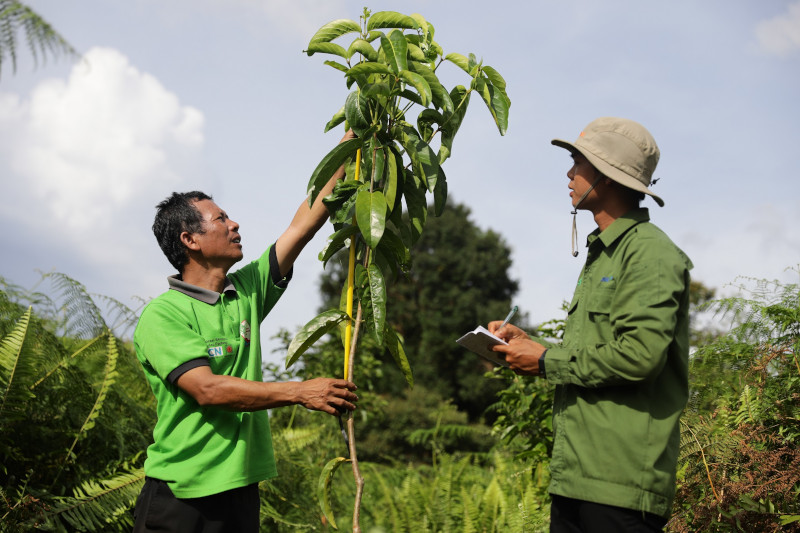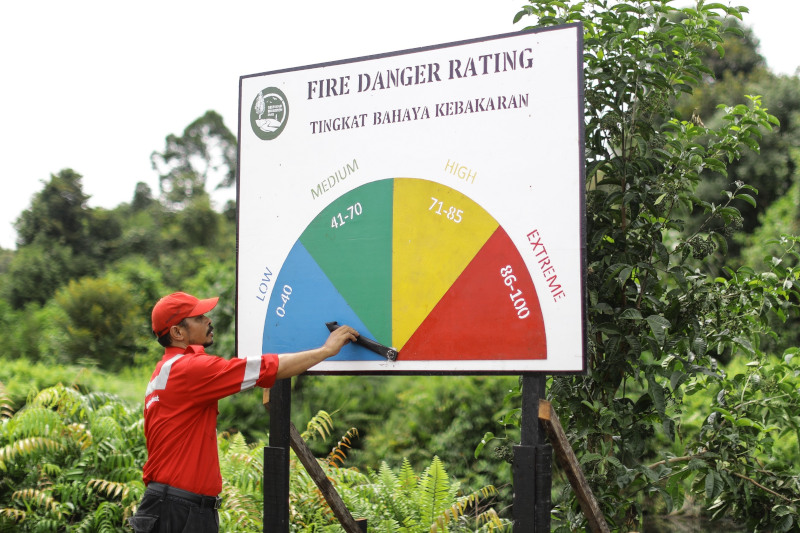March 27, 2024
Peatland swamp forests are some of the most important areas on our planet. These habitats store more carbon than all the word’s rainforests combined. Conversely, when peatlands are damaged through fire and deforestation, they can become a major problem, responsible for almost 5% of global anthropogenic greenhouse gas emissions. This makes their protection an essential step towards restoring the climate.
For the past 10 years, Restorasi Ekosistem Riau (RER) has been working in one of Indonesia’s last remaining peatland areas, on the Kampar Peninsula in Riau, to repair the damage done over previous decades. In practice this involves regenerating the forest, rewetting peat swamps and protecting the landscape from fire, while also turning this area into a hub for the advancement of climate science.
In this article, we look back on a decade of progress at RER while also looking ahead to a more sustainable future, in which peatland environments can be the drivers of positive climate development.
Restoring the forest after years of degradation
Before RER was established in 2013, the landscape had been ravaged by years of commercial and illegal logging. Drainage canals had lowered the water table, drying out the peatlands and leaving them vulnerable to fire. This represented a major threat to the local environment, and a potential catastrophe for the climate.
One of the first steps was damage assessment. RER teamed up with Fauna & Flora to conduct baseline assessments of the region’s biodiversity, measure the remaining carbon stock, and get acquainted with local communities to see how livelihoods were connected to the landscape. Results from these assessments could then inform interventions and provide the basis for sustainable new partnerships.
Initially, the aim was to reduce human disturbance, with guard posts placed at key access points and pathways through the forest. RER also recruited rangers from local communities, and teamed up with local fishers and forest users to help make operations more sustainable. Damage limitation soon evolved into restoration, using a combination of management practices to regenerate the forest and peatlands.
Active regeneration
In many places, all nature needed to bounce back was to be left alone. This technique, known as ‘natural regeneration’, is the most efficient approach in terms of cost and labour. However, in some areas, where degradation had pushed the landscape beyond its capacity to repair itself, nature needed a helping hand.
These locations made up around 1% of the total forest area. And it was here where RER utilized an ‘active regeneration’ approach; collecting healthy tree seedlings from around the forest and raising them in RER tree nurseries, before transplanting them to degraded sites. This approach is the quickest way to kick-start new growth, especially in areas where rebirth would otherwise have been impossible.

Six months after planting, a survival check is carried out and dead seedlings are replaced by new growth. RER’s goal for active regeneration on degraded sites is to establish 400 trees per hectare on a 5×5 metre spacing.
Rewetting the peatland
Healthy peat soil is around 80% water. Before RER was established, drainage canals left behind by logging operations caused oxidation and subsidence that dried out the swamps and increased the risk of fire. And when peatlands burn, they release enormous amounts of harmful CO2 and other GHG emissions into the atmosphere.
A key focus for the RER team was protecting and restoring the peat soils, so they could continue to store the vast amounts of carbon they contain. They built sandbag dams at 40cm gradients to block canals. Each dam was made up of about 150–200 sandbags, which were transported 50 km into the forest by the RER field teams. Once in place, these dams flooded the surrounding forest, keeping the peat soil moist, healthy, and safe.
To date, RER has installed 87 of these dams, which measure 148.6 km in length. A total of 28 canals have been closed so far, as part of wider plans to ‘re-wet’ around 9,300 hectares of forest.
Protecting the landscape from fire
In spite of all these efforts to keep the landscape wet, Riau is still prone to drying out as part of seasonal changes to the climate. During the dry season, and particularly during El Niño Southern Oscillation (ENSO) events, the landscape can be especially vulnerable to forest fires.
In response, RER established a dedicated fire management program that focuses on prevention, preparedness, and rapid response. The team conduct annual hazard risk assessments to identify and manage potential hotspots, while daily Fire Danger Ratings (FDR) are calculated and displayed on information signboards.

Supported by forest patrols, drone monitoring, and awareness training with local communities, this holistic approach has been successful in preventing incidents of fires. Since 2014, zero fire incidents have been recorded in RER areas on the Kampar Peninsula.
Advancing climate science
Despite peat swamp forests’ importance to the Earth’s climate, relatively little is known about these areas. Particularly in comparison to tropical forests that grow on mineral soils, peatlands remain something of a mystery to modern science. Which is why studying them could hold the key to reversing climate change.
Working in partnership with students, scientists, and research institutions from around the world, RER has evolved into an essential knowledge hub, where the GHG emissions from plantation environments, degraded forest, and intact forest can be studied and better understood. A recent 5-year study provided unprecedented insights into emissions estimates for these landscapes, representing a giant leap forward in the development of effective peatland management and climate change mitigation practices.
But arguably the most significant demonstration of RER’s importance to the global climate came in 2021, when an RER carbon initiative on the Kampar Peninsula was officially named one of the world’s largest carbon emission avoidance projects, with total avoided emissions of more than 373 million tons of CO2e projected over the 57-year lifetime of the project.
The peatland swamps of RER are some of the world’s most valuable carbon sinks, with the power to dramatically shape our climate in years to come. Although the road to environmental restoration is long, the past 10 years in Riau provide a powerful example of what can be achieved by taking steps in the right direction. Through a mix of regeneration, collaboration and climate science, they also offer us a roadmap for the journey ahead.